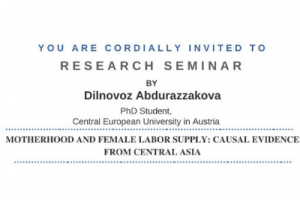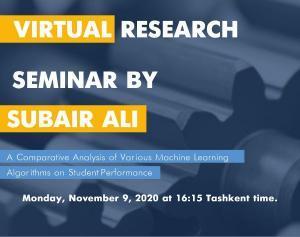This paper estimates the impact of having more children on women’s labor supply in Central Asia. By using OLS method, I find significant negative association between fertility rate and mother’s current labor supply, employment and occupation type. Once potential endogenity issue is solved using IV-regression estimation, having more children decreases only female’s current labor supply. Estimated negative effect is strong among females living in rich households and urban regions. However, if estimation is restricted to mothers who have children, it becomes insignificant factor. Hence, I can state that becoming a mother decreases female’s labor supply significantly but, once female entered to motherhood, marginal change in the number of children does not effect on their working probability.

Motherhood and Female Labor Supply: Causal Evidence from Central Asia
Hits: 0




